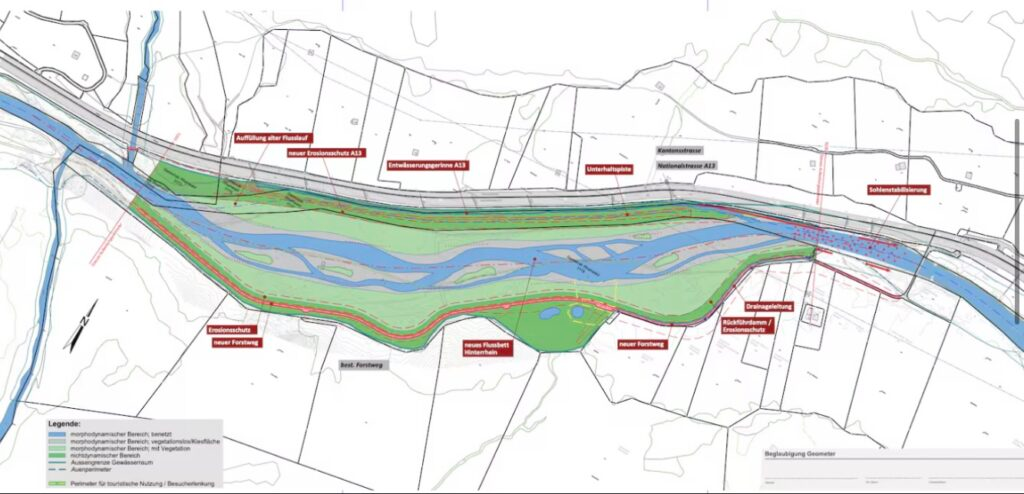Revitalisation in Rheinwald, canton Graubünden/Grisons: Greenwashing—the new window dressing?
The Blick recently published a piece on a ‘historic clearing’, carried out in record time by 2 forestry workers in the canton of Graubünden that reads like a good yarn. This is how the story was presented: “In the municipality of Rheinwald GR, a healthy spruce forest covering an area of 109,000 square metres is being cleared to make way for a new floodplain. Despite the massive intervention, the local population, the federal government and nature conservation organisations support the project.”

Shoring up banks and allowing excessively straightened streams to meander once more does sound like a good idea. But there are a few disturbing facts that spoil the overall narrative:
- Destroying such a large area of forest is a bad idea faced as we are with global warming, especially as the stand was visibly healthy. Neither were the spruce trees unsuitable for the location which, at some 1,500 metres above sea level constitutes ideal mountain territory for spruce. The forest would not have survived there for so long otherwise. It also served as a valuable CO2 sink, air filter, water purifier and soil stabiliser.
- If such a large area of forest did have to be converted into a different form (spruce stand to alluvial forest), then it should have been done in stages and not with large-scale clearcutting. The Hinterrhein River will very likely reclaim the renaturalised stream bed and the planned alluvial forest will only gain a foothold in small areas, if at all.
- The new habitat is expected to become “a floodplain that will provide a new home for a large number of animals and plants”. Wishful thinking or window dressing? The truth is that it is unlikely that a floodplain forest will grow back to replace the spruce forest.
- The intervention is far too radical to be approved from a nature conservation perspective (although: Pro Natura and WWF seem to do so, according to the Blick report – but that’s another story).
- The newspaper article states that the measure was well received by the population; the reader comments however beg to differ.
- Such radical interventions must first be authorised by the Federal Office for the Environment (FOEN). Clearcutting is, with some exceptions, prohibited under the Federal Act on Forests (ForA), however, a replacement area of the same size must be reforested in the immediate vicinity. As we have argued above, no forest that fulfils the definition of a forest according to the ForA and the Federal Ordinance on Forest (ForO) is likely to grow back here. The excuse that the floodplain forest constitutes replacement afforestation is therefore inadmissible.
- Incredibly, according to the article: “Around 60 years ago, a dam was built in Sufers. Because forest was lost there, the municipality reforested Rheinwald. This is how the forest was created that is currently being cleared again”.
- What it boils down to is that the Rheinwald was seen as the perfect opportunity to obtain easy-to-cut, high-quality timber under the guise of a renaturation, biodiversity-promoting project, but at the expense of an intact natural ecosystem.
September 2024
Contribution photo: symbolic image
